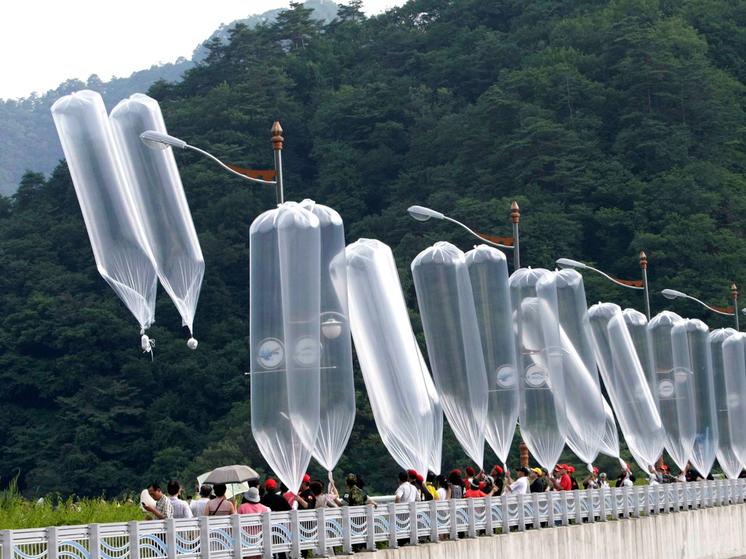One of these inventions has reached China
For the last few weeks, the information field has been occupied by incessant news about the exchange of balloons with different contents between the two Koreas. Balloons with garbage and sewage are flying into the territory of the South, and balloons with dollar bills and flash drives with the achievements of the South Korean stage are flying into the territory of the North. The Japan Times revealed the hidden side of this «diplomacy» by revealing how a Seoul group is developing high-tech balloons to send to the North.

So-called «smart balloons,» created using 3D printers and components purchased online and sometimes equipped with GPS tracking, can cost up to $1,000 each, The Japan Times reports.
One or two Once a month, from spring to autumn, when a fair north wind blows, a secretive group releases balloons — mostly under the cover of darkness.
The goal is to deliver cargo deeper into North Korea, including as far as the capital Pyongyang, and now over longer distances. One balloon flew to China.
“Our smart balloons are expensive, but we think they are a hundred times more powerful than the balloons flown by other groups,” — said one member of a group called the Joseon Reform and Opening Committee. Joseon — another name for North Korea.
The group, which has about 30 core members and is funded by members' own money as well as donations, has not previously spoken to the media in detail about its activities.
North Korea, which has rarely launched balloons in recent years, sent more than 1,000 balloons south, most of them loaded with garbage and some with manure. These actions were a response to similar actions in the South.
This increased tension between the countries. Seoul, for example, on Sunday resumed broadcasts through loudspeakers aimed at the North for the first time since 2018.
How effective the balloons are is a matter of debate, notes The Japan Times. There is no independent verification of where they will land or what average North Koreans might think of the contents.
Members of the Seoul group declined to give their names, fearing persecution from South Koreans who criticize such activists and potential reprisals from by the South Korean authorities. Yes, yes, exactly South Korean, there is no mistake here.
The group's hydrogen-filled smart balloons can carry a payload of up to 7.5 kilograms.
In a small rented apartment in Seoul, the team uses 3D printers to make white plastic boxes and some connecting parts.
In a small rented apartment in Seoul, the team uses 3D printers to make white plastic boxes and some connecting parts.
In a small rented apartment in Seoul, the team uses 3D printers to make white plastic boxes and some connecting parts.
Wires, circuit boards and timers purchased from e-commerce sites in China and South Korea are used to create devices that control the distribution of balloon contents.
Most of these inventions contain devices programmed to scatter 1,500 flyers, 25 at a time, taking into account the expected flight path, wind and other weather conditions.
New this year: some of the balloons had speakers attached to them that play previously recorded slogans critical of North Korean leader Kim Jong Un.
A typical load would be six speakers and six other bundles, each containing a Bible and a shortwave radio, according to one group member.
The lantern-shaped acoustic devices are built using a waterproof housing, lithium-ion batteries and an amplifier.
When deployed, three small parachutes on top of the speaker deploy, and a foam base helps absorb any shock upon landing. They then play 15 minutes of North Korean songs and messages recorded in a North Korean accent and pause for 30 minutes before starting again. The battery lasts for 5 days.
Another key technical advancement was valves linked to the altimeter, which automatically prevent balloons from rising too high, allowing for more stable flight. However, flying objects remain dependent on the weather.
The group estimates that its balloons have a 50% to 60% success rate if they fly more than a few tens of kilometers north of the border.< /p>
Activists estimate that several groups in the South regularly send balloons to the North. The South Korean government once sent out its own leaflets, but abandoned the practice more than a decade ago.
Such protests have sparked controversy in South Korea, where some residents have clashed with activist groups claiming the balloons are confrontational. and putting them at risk.
The Smart Balloon Group said South Korean Marines near the border had previously verbally warned them against carrying out the launches. However, the military said troops do not have the right to restrict balloon launches by private groups.


